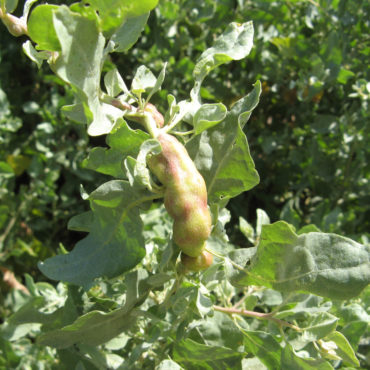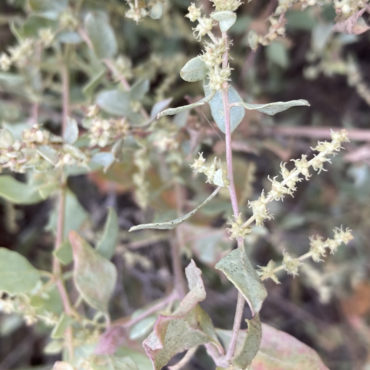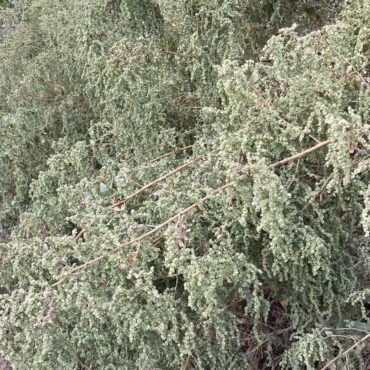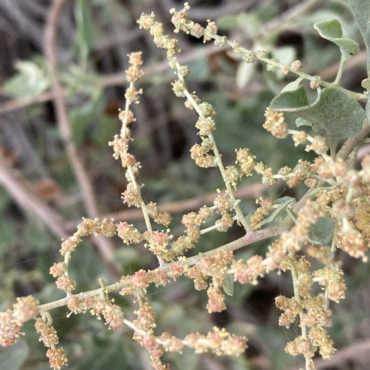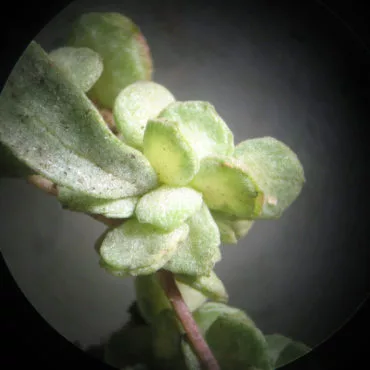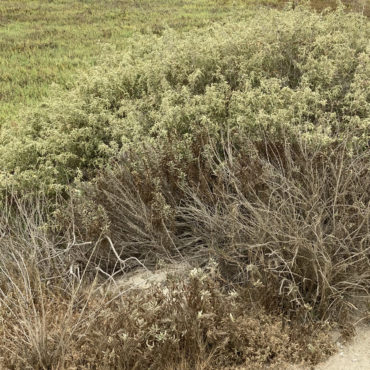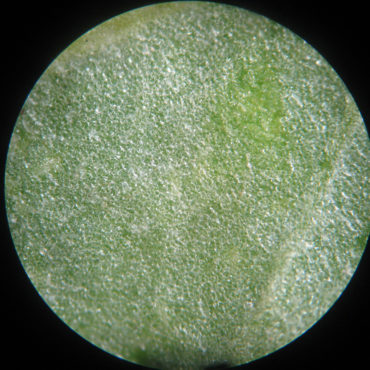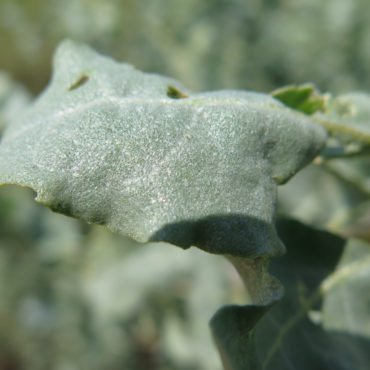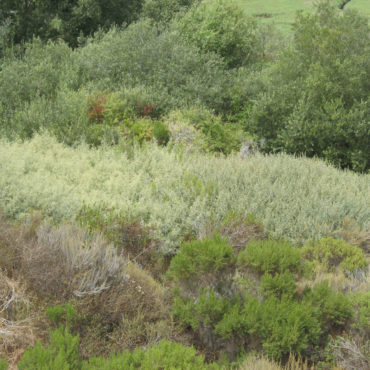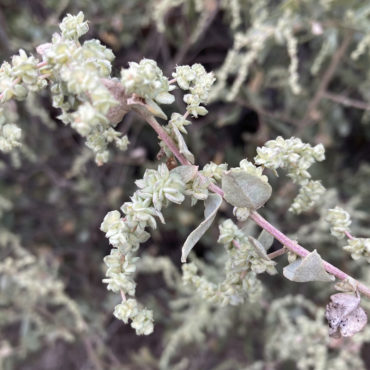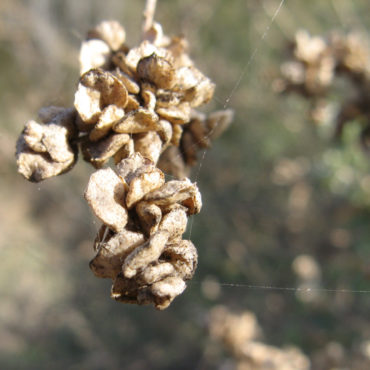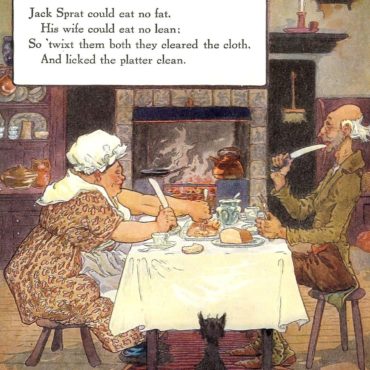Classification
Big saltbush is a dicot angiosperm that most references 2, 306 place in the goosefoot family (Chenopodiaceae), although, based on molecular evidence, some systems consider it a subfamily in the amaranth family (Amaranthaceae).41, 143 Plants in this family are often succulent or scaly; many appear weedy; many are salt tolerant. Typical flowers are tiny, greenish and lack petals.11, 34, 44, 143 Well known members of the goosefoot family include beets, spinach, and quinoa.11,44 In the Reserve, a common goosefoot is pickleweed (Salicornia pacifica).
Atriplex is a genus of about one hundred species,11 forty-two of which are found in California.7 Species of Atriplex are distinguished from other members of the family by the structure of the female flower, which is enclosed in two bracts that are fused only at the base.11
In the past, subspecies of A. lentiformis have been recognized. The coastal form, with larger leaves was called ssp, breweri, and this gave rise to the common name Brewer’s saltbush. A more recent interpretation 2, 306 is that the within species variability is due to environmental factors, rather than genetic differences and subspecies have been merged.
Jepson eFlora Taxon Page


